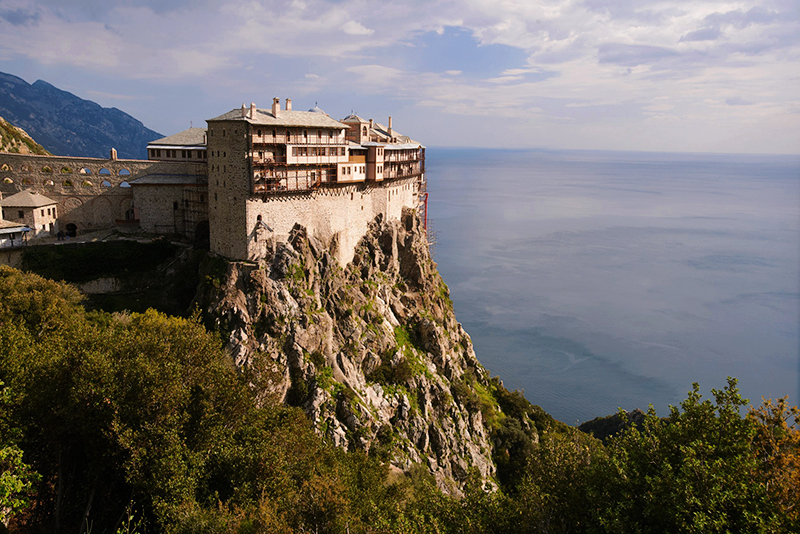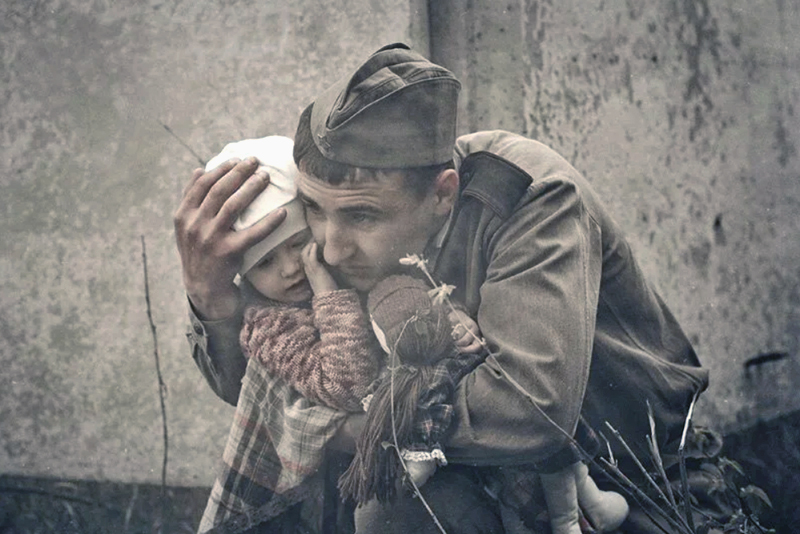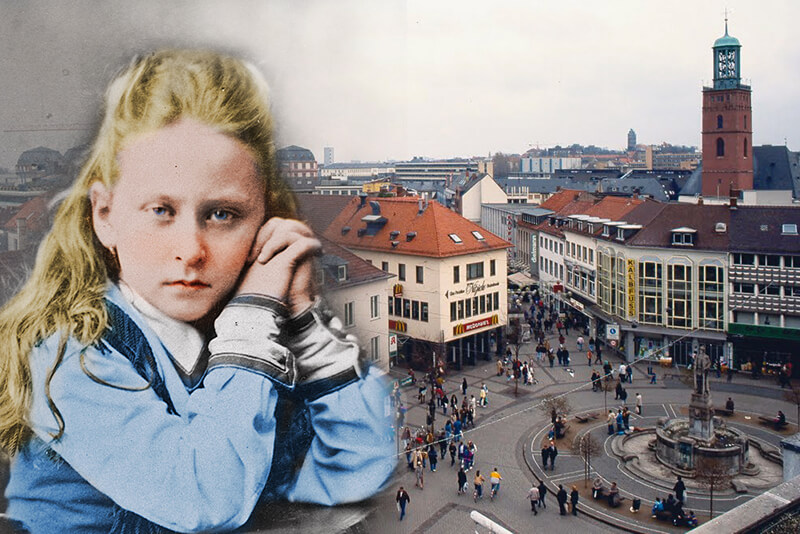
In our article about the Four Domains of the Most Holy Theotokos we briefly told you the stories of their appearance. What happened in these places afterwards? What were the saints, glorifying the Queen of Heaven, and the wonderful deeds that She Herself performed there? This time we are sharing with you some information about the first saint on Mount Athos, as well as two little-known miraculous images of the Mother of God in that second earthly domain of Hers.
Venerable Peter the Athonite
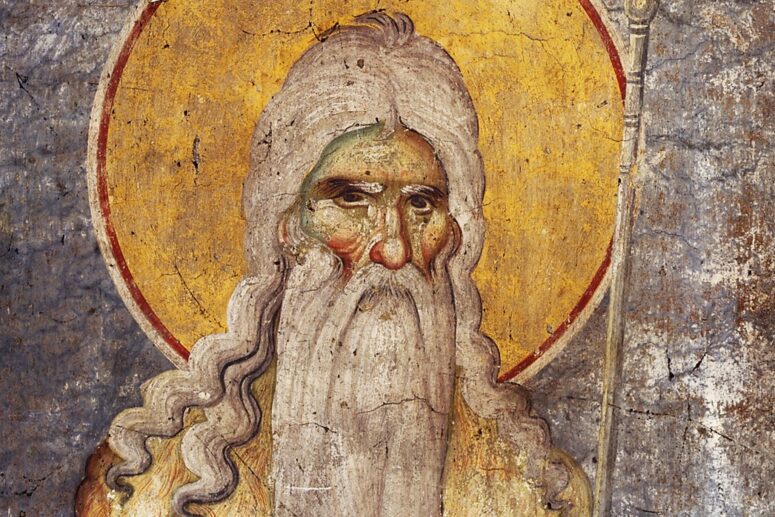
Venerable Peter was the first ascetic who was led to the Holy Mountain by the Most Pure Virgin. He was a Greek commander serving under the emperor of Constantinople. In 667 he was captured during a war with the Syrians and imprisoned in a fortress on the Euphrates River. Pondering why the Lord had sent him such a punishment, Peter remembered his long time ambition to join a monastery. Then he began to pray, fast strictly and ask St Nicholas for intercession. The holy hierarch appeared to him twice in a dream, advising him to pray to St Simeon the God-receiver. When St Nicholas appeared for the third time, it became clear to Peter that he was with St Simeon. Together the saints miraculously rescued the prisoner. St Simeon melted Peter’s chains, while St Nicholas led him to the exit from the fortress, after which he reminded Peter of his vow to God and disappeared.
Following his vow, made in prison, St. Peter went on a pilgrimage to Rome, where he was tonsured into monasticism by the St Agatho*. From him, the saint learned the rules of monastic life and, with his blessing, set off by sea, heading east. The Mother of God appeared to the traveller in a dream, while he was still on the ship, and pointed to him his future dwelling place where he would spend the rest of his days. That place was Mount Athos. The ship entered the harbour of Mount Athos by itself, and St Peter went ashore. After that event in 681, the venerable spent 53 years in solitary places of the Holy Mountain without meeting a single person. During that time, his decayed clothes were replaced by the long hair and beard, covering his body. Living an ascetic life in the desert, St Peter was often attacked by demons who tried in every possible way to lure the venerable out of his solitude. But St Peter bravely confronted them, always answering that he would not leave without the command of the Mother of God. The ascetic could stay without food for 40 days, before he was nourished by manna, which was sent to him from time to time. Then he could fast for 40 more days.
Once, a hunter saw the holy hermit with no clothes on. The hunter became frightened and wanted to run away, but St Peter stopped him and told him his story. Then the saint commanded the hunter to correct his life and return in a year. When the hunter came to the saint’s cave for the second time bringing with him his demon-possessed brother, he found the venerable already deceased. The hunter cried bitterly, while his brother, barely touching the relics of St Peter, was immediately healed. That happened in 734. The surviving information about St Peter’s relics is ambiguous. According to the saint’s hagiography, they were initially kept in the monastery of St Clement. Later, during the iconoclasm of the 8th-9th centuries the relics were hidden and then transferred to the village of Photokomi in Thrace.
It is known that the cave of St Peter the Athonite was located near the Great Lavra, the very first and main monastery of Mount Athos, founded in 963 by St Athanasius the Athonite.
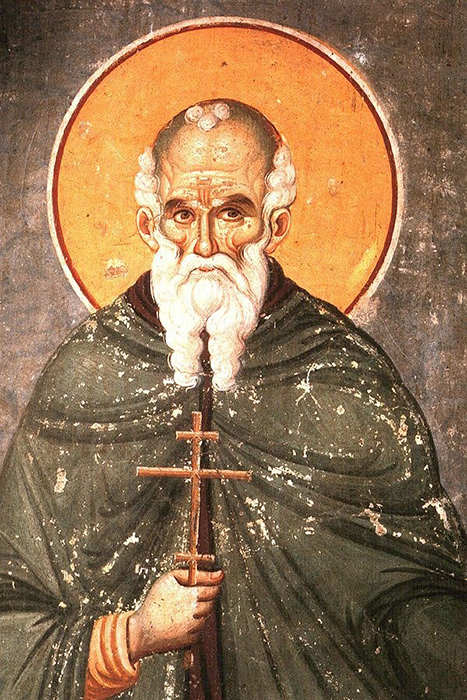
This monastery houses two miraculous icons of the Mother of God, Economissa and Kukuzelissa. Each of these images tells its own unique story.
Economissa Icon
Soon after St Athanasius founded the Lavra on Mount Athos, a severe famine began there. All the brethren eventually left the monastery. Hegumen Athanasius was the last to decide to leave. On his way he met a Woman with a blue veil who asked him where he was going. The saint was extremely surprised by both the Woman’s appearance and the question. Although he did not recognize the Mother of God, he told Her that hunger forced him to leave the Lavra. “Have you deserted your monastery for a morsel of bread? Go back! You will have everything you need in abundance, if you do not abandon your monastery. It will become famous as the first among all the Athonite monasteries,” said the Woman. “But who are You?” St Athanasius asked in astonishment. “I am the Mother of your Lord. I am the One whose name you dedicate your abode to.” replied the Blessed Virgin. Venerable Athanasius did not believe Her, knowing that the enemy could take on a bright image. Then the Most Pure Lady said, “Strike this rock with your staff in the name of the Holy Trinity, and you will know who is speaking to you. Know that from this time forward, I shall be the Stewardess of your monastery.” Athanasius fulfilled the command, and saw a stream of water gushing out of the rock. Struck by the miracle, St. Athanasius reverently turned to the Mother of God, but She was no longer there. When he returned to his abode, he saw that the storerooms were full of supplies. Soon the monastery was again filled with brethren, and since then there has been no other housekeeper there but the Heavenly Stewardess. In memory of that miraculous event, the icon of the Theotokos “Economissa” was painted in the Lavra.
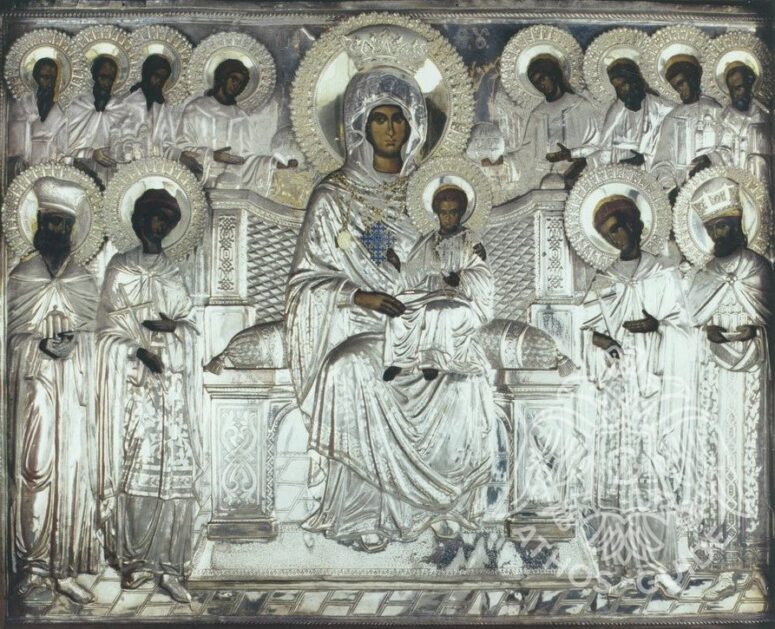
Panagia Koukouzelissa
The second miraculous icon of the Mother of God that we would like to dwell on got its name in memory of the event that happened in the 12th century with St John Koukouzelis, the main choir singer of the Great Lavra.
The young John had a wondrous gentle voice and easily entered the court school of Constantinople, where he studied singing. However, the young man soon realized that it did not bring him any joy to entertain the emperor with music. Having learned that the emperor intended to arrange his marriage, John fled. The Lord brought him to the Holy Mountain, where the young man took monastic vows at the Lavra.
Over time, St John went into seclusion and stayed there 6 days a week, only returning to the monastery on Sundays to sing during services. Once, after performing the akathist to the Queen of Heaven, St John became tired and fell asleep before Her icon. In a dream, the Mother of God appeared to him and sang in a joyful akathist voice, “Rejoice, my child John! Sing for Me, and I will not leave you for this.” On waking up, the righteous man found a gold coin in his hand. Since then, the icon of the Mother of God, before which the miracle happened, received the name “Koukouzelissa” and began to perform miracles, as well as the gold coin, which St John donated to church.

We have already written about the Iberian icon, Holy Mountain’s most famous image of the Mother of God, kept in the monastery with the same name, which is located at the site where the Most Pure Virgin went ashore onto the coast of Athos .
Read more about the first lot of the Theotokos here.
* The Venerable Agatho, Pope of Rome, is venerated by the Orthodox Church.

